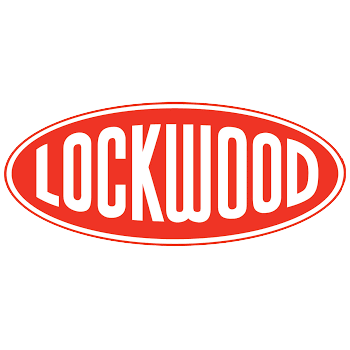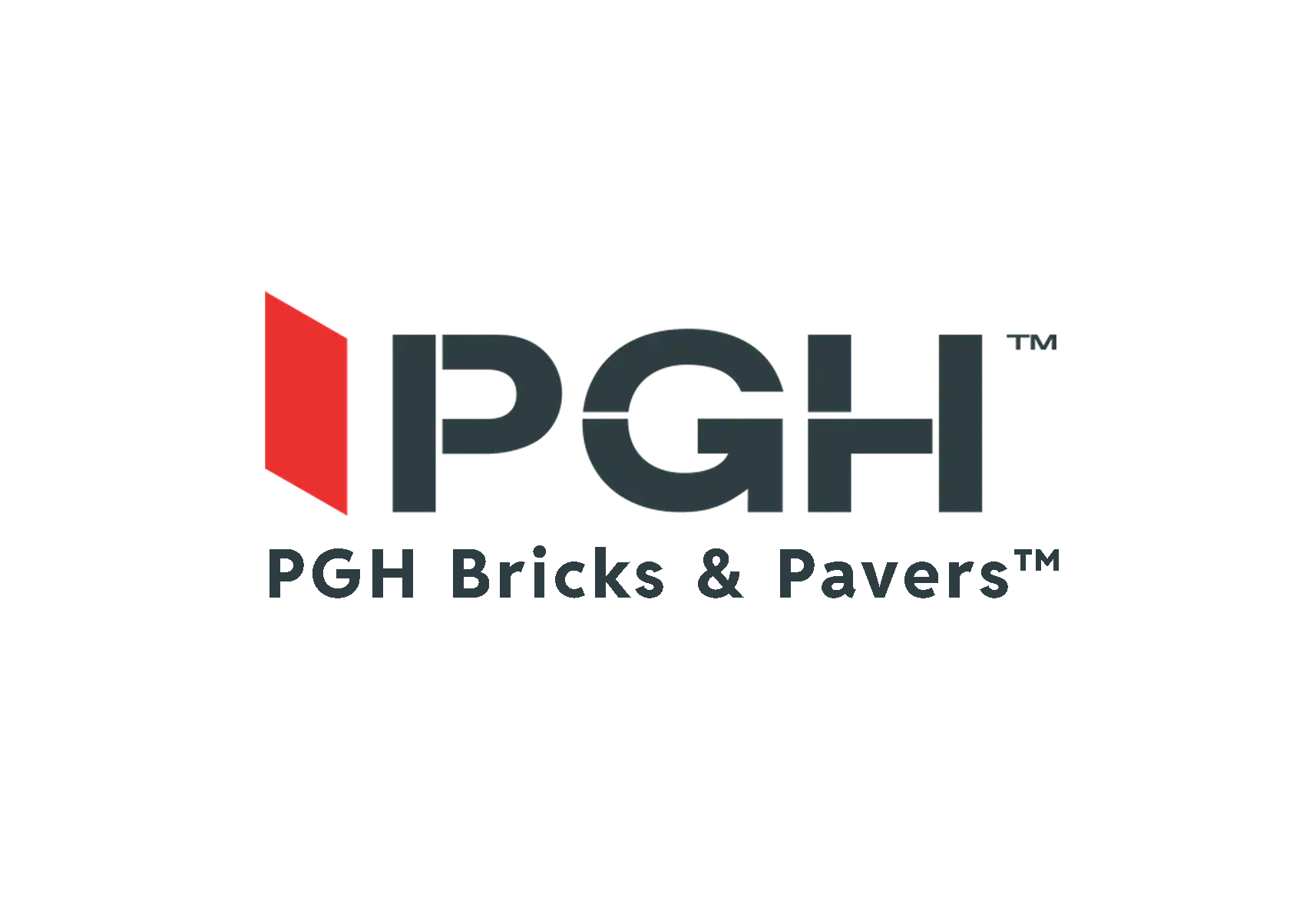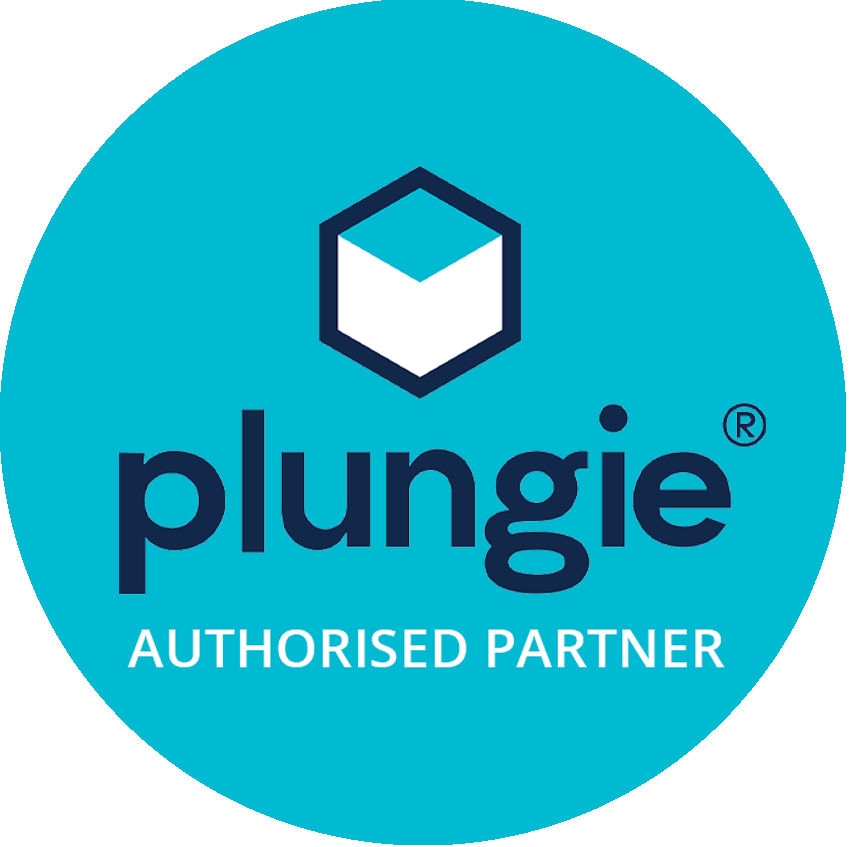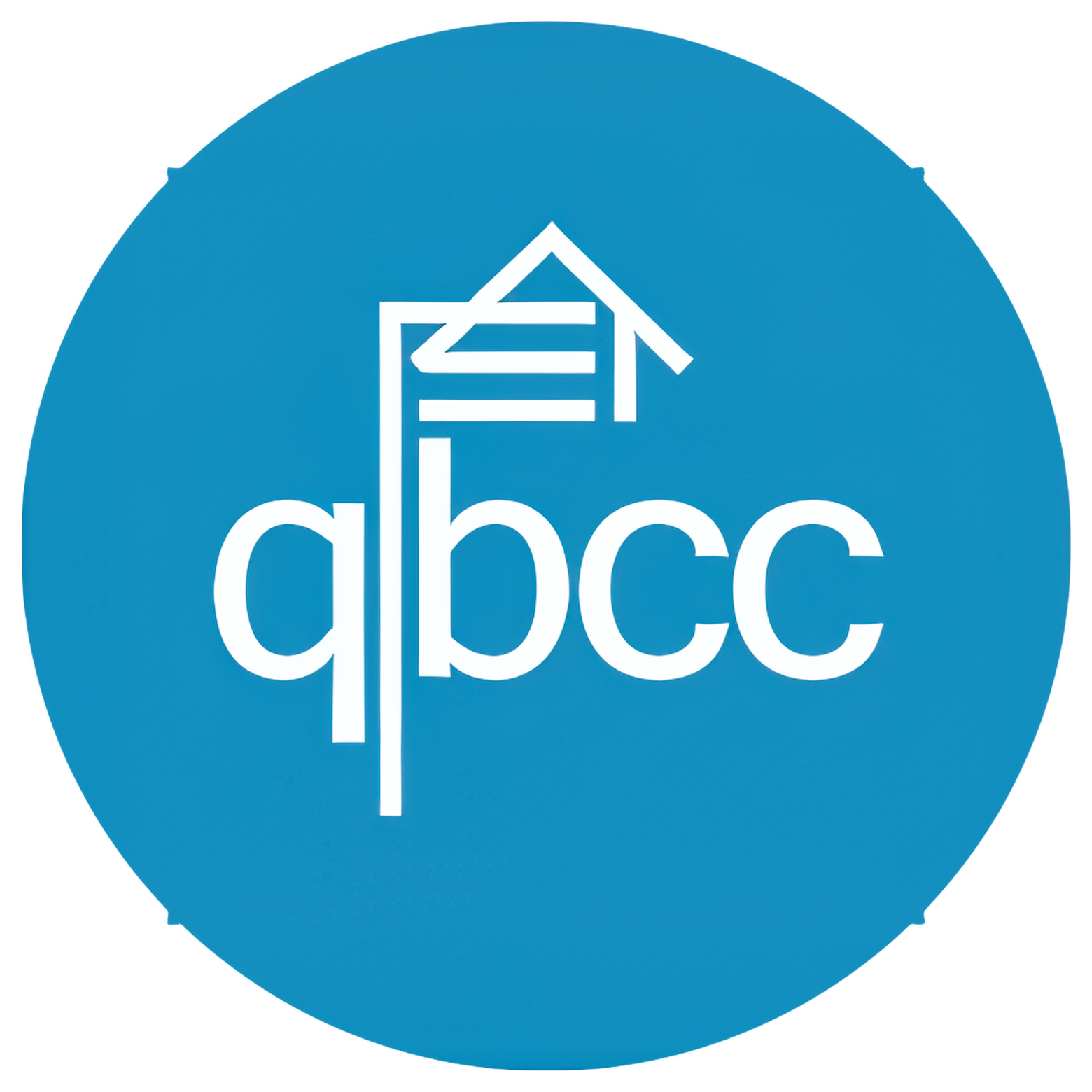What to Look for in a Building Contract
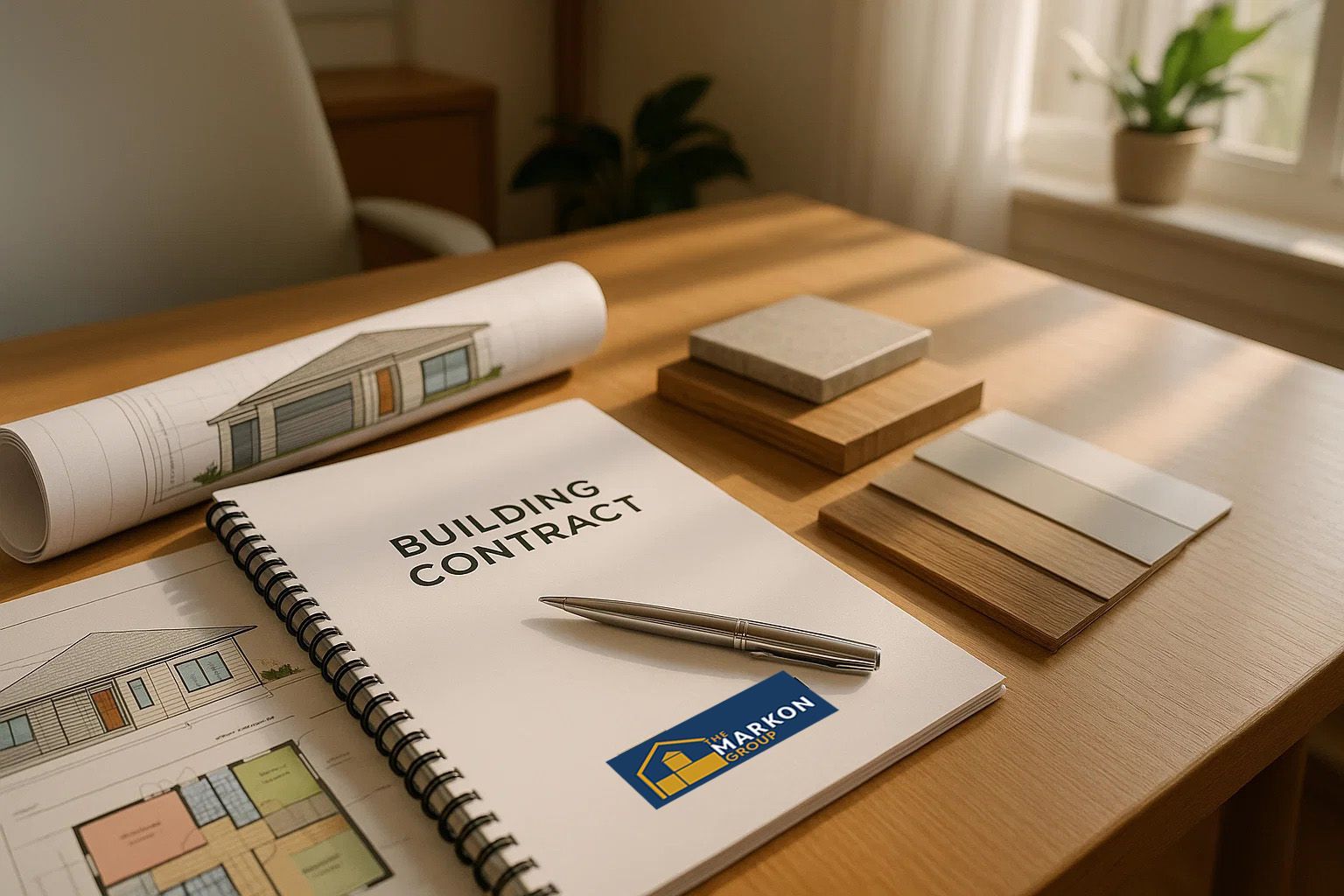
Building your first home in Queensland is an exciting journey
from dreaming up custom designs to finally getting the keys.
But before construction begins, there’s a critical step that can feel daunting: signing the building contract. This legally binding document will shape your entire build experience, so understanding it is essential. Unlike buying an existing house (where you sign a standard purchase agreement and get a finished home), building a home means entering a detailed construction contract with a builder. The process and paperwork are different and first-time builders often have little idea what to expect. Don’t worry – in this guide, we’ll walk you through what to look for in a Queensland building contract, explaining each part in plain English.
We’ll start by exploring why building contracts matter (and how they differ from a normal house purchase). From there, we’ll look at how your custom home design choices and inclusions need to be locked in before you sign. We’ll explain the importance of an inclusions checklist (and what it typically covers) so you won’t miss any details. You’ll learn about progress payments – those milestone payments you’ll make as your build progresses – including typical Queensland stages like slab, frame, and handover. We’ll also demystify contract clauses about variations, timelines, warranties, insurance, defects and cooling-off periods. To keep you safe, we’ll highlight red flags first-home builders should avoid. Along the way, you’ll see how The Markon Group’s client-first approach addresses these issues with transparency and meticulous planning. Finally, we’ll wrap up with practical tips for approaching the contract stage confidently. Let’s dive in.
Why Building Contracts Matter (Especially in QLD)
A building contract is more than just paperwork – it’s the roadmap for turning your dream home into reality. In Queensland (QLD), a residential construction contract sets out what will be built, how, when, and for how much. It differs greatly from a contract to buy an existing home. When purchasing an established property, the contract of sale is relatively short-term and straightforward (you agree on a price, do inspections, and settle). In a building contract QLD first-home buyers will encounter a much more detailed agreement that covers the entire construction process. This includes stages of work, progress payments, specifications, timelines, warranties and more.
Why does this matter? Because building a home is a complex, months-long project with many moving parts. A well-written contract protects you by clearly defining the builder’s obligations – and your own. It ensures you get the home as designed and agreed, and that you only pay for work once it’s properly completed. In Queensland, for example, contracts over $3,300 must include a detailed payment schedule and meet certain legal requirements to protect homeowners. If a contract is vague or one-sided, you risk disputes, delays, cost blowouts or unfinished work. As one legal expert notes, a vague scope of work or unclear terms is a huge red flag – it makes it hard to hold the builder accountable and invites disagreements later. In short, the contract is your safety net. It holds the builder to delivering what was promised, and gives you recourse if things go wrong.
Another key difference in QLD: when building new, you benefit from certain protections that don’t apply to buying established homes. For instance, Queensland law mandates a cooling-off period after signing a building contract (usually 5 business days) during which you can withdraw. Also, the builder must take out a Home Warranty Insurance policy for your project – a scheme that protects you if the builder can’t finish the job or fix defects. These safeguards don’t exist when buying an existing home “as is.” So, your building contract is not only a blueprint for construction, it also triggers these consumer protections to give first-home builders peace of mind.
Bottom line: Take the building contract seriously and read it thoroughly. It’s longer and more detailed than a house purchase contract, but for good reason. In the next sections, we’ll break down its key components so you know what to look for.
From Design to Contract: Locking in Your Custom Home Plan
One of the most exciting parts of building a custom home is the design phase – choosing layouts, styles, finishes, and all the personal touches. But here’s a pro tip: make your design decisions before you sign the contract, not after. All those client-driven changes and selections need to be documented up front, because once the contract is signed, any change typically becomes a variation (which can add cost or time). In other words, the contract should lock in exactly what you’re getting in your new home, based on the plans and specifications you’ve agreed on.
How do you ensure that happens? Work closely with your builder or designer on a detailed specification and inclusions list during the planning stage. This includes everything from the big-ticket items (like number of rooms, ceiling height, type of roof) down to the little details (like tapware model, paint colors, power outlet locations). It may feel tedious to nail down so much in advance, but it’s vital.
The building contract will reference these plans and specs as the “scope of work.” A well-defined scope means fewer misunderstandings later. As construction lawyers often warn, an ambiguous scope of work is a recipe for disputes – you don’t want language like “build to agreed standard” without specifics. Instead, the contract should clearly attach or reference your finalized plans, engineering drawings, and an inclusions checklist as appendices. That way, both you and the builder know exactly what’s included in the price and what isn’t.
At The Markon Group, we make this a cornerstone of our process. We take the time to “deeply envision your idea” during design, finalizing every detail with meticulous attention so the contract accurately reflects your dream home. The result? When it’s time to sign, we’re all on the same page. There are no loose ends or assumptions – every material, fixture and finish has been chosen and listed. This approach ensures that your contract isn’t just a legal formality, but a precise mirror of the plan you’ve approved. It also minimizes the need for variations later on, since everything you want is already accounted for. (Remember, variations – changes after signing – are one of the most common causes of budget blowouts and disputes, so planning ahead saves money and stress.)
Tip: Before signing, double-check that all your requested inclusions or upgrades are written into the contract or attached documents. Verbal promises or sketch drawings aren’t enough. If it’s important to you, make sure it’s in writing. Ensure the plans and product schedules are final. If you’re unsure about any terminology, ask questions now. By locking in your custom home design details pre-contract, you set the stage for a smoother build with far fewer surprises.
The Inclusions Checklist: Don’t Leave Anything Out
One of the most important documents in your building contract pack is the Inclusions Checklist (sometimes called the specification or inclusions list). Simply put, inclusions are all the items, materials and services that are included in your contract price. This checklist spells out what you’re getting for your money – and by omission, it also reveals what’s excluded (anything not listed). First-home builders should scrutinize this list carefully.
Why is the inclusions checklist so crucial? Because it manages expectations and prevents “I thought that was included!” moments down the track. Common inclusions encompass things like: the bricks or cladding for your exterior, roofing materials, window types, flooring (tiles, carpet, etc.), kitchen cabinetry, appliances, bathroom fixtures, paint, light fittings, and so on. It also covers services like obtaining building approvals, site cleanup, and connection of basic utilities. Basically, it’s a detailed inventory of what the builder will supply and do. For example, your list might specify the brand and model of oven, the number of LED downlights per room, the size of the hot water system, the landscaping allowance, and even the color of the garage door.
Equally important are any exclusions or allowances noted. Exclusions could be things like landscaping, fencing, window coverings, or floor coverings (if you plan to do those yourself later). Allowances or provisional sums might be used for items that can’t be fixed yet – for instance, a provisional sum for rock excavation if it’s uncertain, or an allowance for tiles if you haven’t chosen a specific tile but a budget per square meter is set. Take note of these, because if the actual cost exceeds the allowance, you may pay extra. The more fixed inclusions (and fewer open allowances) you have, the more certainty you have about the final price.
A thorough inclusions checklist protects you from both disappointment and extra costs. Imagine assuming that stone kitchen benchtops were included, only to find the standard inclusion was laminate – that could be a nasty surprise. By reviewing the list, you can identify any elements you want to upgrade or clarify before signing. As one building lawyer advises, insist on a detailed description of materials and finishes, down to brands and model numbers if possible. If anything is vague (e.g. “tapware: chrome mixer”), ask for specifics (which brand/model?) or at least clarify the budget allocated. This way, you know exactly what you’re getting.
What to look for on an inclusions list: Does it cover all rooms and aspects of the build? Does it list flooring in every area (and is it the type you expect)? Are kitchen appliances included – which ones, what brand? What about bathroom accessories like towel rails and mirrors? Is paint included (often yes, two coats)? Light fixtures? External works like driveway, turf, or clothesline? Each builder’s “standard inclusions” vary, so compare this list with your wish list. If something is missing, discuss adding it or at least know it’s not in the contract (so you can budget for it separately).
For example, insulation is a key inclusion to check: ensure the contract specifies the insulation rating (e.g. R2.5 batts in walls) appropriate for QLD climate – good insulation can save on energy bills. Energy-efficient fixtureslike the hot water system or air-conditioning – are they included and suitable for your home’s size? If the standard inclusions seem low-end (e.g. a basic 1.5HP aircon for a large living area), you might negotiate an upgrade now rather than later. Other items first-timers often overlook include: garbage disposal units, full height tiling in showers, outdoor taps, letterbox, NBN connection – check if they’re in the list.
The Markon Group provides a very detailed inclusions list as part of our fixed-price proposal. In fact, you’ll see every inclusion spelled out, any provisional sums (if needed), and even a progress payment schedule in the proposal – “no surprises later”. We believe transparency up front is key. By the time our clients sign the contract, they know exactly what’s included in their new home, line by line. This not only gives peace of mind, but also helps your lender; most banks in QLD want to see a fixed-price contract with a clear inclusions list before approving construction finance. It shows that the price is locked down and reduces the risk of cost overruns.
Remember: Read the inclusions checklist before signing and keep a copy. It’s your reference throughout the build to ensure you’re getting everything you paid for. During construction, if something looks different than expected, you can refer back to the contract and inclusions list to discuss it with your builder. This list is truly your friend – take the time to understand it, and you’ll avoid that classic first-timer mistake of assuming something was included when it wasn’t.
Progress Payments: How They Work in Queensland
When building a house, you don’t pay the full contract price up front. Instead, you’ll pay in stages as the work progresses – these are progress payments. Understanding how progress payments are structured in Queensland is crucial, since it affects your cash flow, your loan, and your protection as a consumer. A good building contract will lay out a clear progress payment schedule linked to specific construction milestones. Here’s what a typical Queensland progress payment schedule might look like (using common stages for a standard home build):
- Deposit: Usually 5% of the contract price, paid when you sign the contract. In QLD, the law actually caps the deposit at 5% for work over $20,000 – so beware if a contractor asks for more (that’s a red flag and not allowed). The deposit secures your spot in the builder’s schedule and covers initial costs like drafting plans or building approvals.
- Base Stage (Slab Stage): Often around 10% of the contract, due when the concrete slab (or house footings) are completed. At this stage, the foundations are in place – you can literally see the outline of your home on the ground.
- Frame Stage: About 15% due when the timber frame of the house is up and approved by an inspecto. Now the “skeleton” of your home is standing (walls and roof frame, though not enclosed yet).
- Enclosed Stage (Lock-Up Stage): The largest payment, roughly 30-35%, due once the house is at “lock-up” – meaning the roof is on, external walls are finished, and windows/doors are installed. At this point, the home can be secured and is weather-tight. (Some contracts split this into two stages: Roof Stage and Lock-Up, but generally by lock-up you’ve paid around 50% of the contract in total.)
- Fixing Stage: Usually around 20% due when the interior is largely fitted out. This covers work like plastering, installing cabinets, doors, skirting boards, and so on – all the internal fixtures and fittings that make the house look more finished.
- Practical Completion (Handover Stage): The final balance (often 10-15%) is paid when the house is practically complete. “Practical completion” means the home is finished and ready to live in, aside from possibly some minor defects or touch-ups noted on a handover inspection. You should not pay this last installment until you’ve done a walkthrough, any significant defects are fixed, and you have confirmation (like a completion certificate) that the building is done.
These percentages are a typical example; your contract might vary slightly, but all progress payments must be proportional to work completed by law. In fact, Queensland no longer prescribes exact stage percentages, but it does require that payment schedules are fair – e.g. by the time you’ve paid 50% of the price, at least 50% of the work should be done. You should never be asked to pay ahead of work; if a builder tried to front-load the payments, that’s a concern.
Linking payments to stages also helps you as the owner. It means you can (and should) inspect the work at each stage before paying. The QBCC (Queensland Building and Construction Commission) recommends only paying once a stage is fully completed as per contract. For example, at frame stage – is the entire frame up and approved? At enclosed stage – are all external doors/windows in? If something’s not right, you can hold off payment until it is, giving the builder strong incentive to do quality work on schedule. .
Progress payments and your loan: Most first-home builders use a construction loan, which releases funds in segments to match these stages. Your bank will likely want to see the contract schedule, and they may send an inspector or ask for photos at each drawdown. Markon Group, for instance, aligns the payment schedule with common lender stages and keeps the bank informed at each milestone. We also update you at every stage claim in plain English – no jargon – so you know what you’re paying for. Clear communication about progress payments is part of our honest, client-first approach.
For your planning, note that you’ll need to contribute your deposit (and perhaps some early stage payments) from your own savings if the bank loan doesn’t kick in until after slab. Ensure you understand from your lender how they handle each stage. For instance, some lenders require you to pay the deposit first, then they fund subsequent stages.
Tip: Never pay a progress invoice before the stage is finished, and never pay more than the contract specifies. Paying too early or too much can actually void some of your protections under the Home Warranty Scheme. Stick to the schedule. Also, check that the contract’s description of each stage is clear (e.g. “Enclosed stage means roof on, external cladding complete, doors/windows fixed in place”). This avoids arguments about what constitutes completion of a stage. If you have an independent inspector, you can have them inspect at key stages to verify work before you pay – an extra peace of mind step some first-timers take.
In summary, progress payments are there to protect both you and the builder: you pay for work as it’s done (not all up front), and the builder gets funds to keep the project moving. A fair schedule with defined stages is a hallmark of a good building contract in QLD. Understanding it will help you budget and avoid disputes.
Variations: Changes, Costs, and How to Avoid Surprises
After your contract is signed and work begins, any change to the agreed plans or inclusions is called a variation. This could be initiated by you (the owner) – for example, you decide to add an extra power point, or change a tile selection. Or it could be required by the builder or circumstances – say, a certain material is unavailable and needs substituting. Variations are normal in construction, but they can significantly affect your budget and timeline if not managed carefully. The best strategy is to minimize variations through thorough upfront planning (remember our earlier advice to lock in design decisions before contract). Here’s what to know about variations:
By definition, a variation is a change to the contract after signing. That means it usually involves altering the work to be done, the price, and/or the timeframe. For instance, if you upgrade the kitchen benchtop from laminate to stone mid-build, that’s a variation likely increasing the contract price. Or if a structural post needs to be moved, resulting in engineering changes – that could be a variation affecting time and cost.
Variations must be documented in writing and agreed by both parties. A good contract will have a clause outlining the variation process. In QLD, the law actually requires that before any variation work is done, the contractor gives you a written variation document detailing the change and its price/time impact, and you sign to accept it. (Only exception is emergency work for safety, which still must be documented ASAP.) Never rely on verbal “yeah, we can do that” changes. Always insist on written variation forms – this avoids confusion and gives you a record if disputes arise. Undocumented variations are notorious for causing disputes and budget blowouts.
When reviewing a variation document, check that it clearly states: what the change is, how much it will cost (added or deducted), and any extra time needed to complete it. Also, if it’s an owner-initiated variation, note if the payment for it is due immediately or at next progress claim. Many builders will require you to pay for the variation as soon as it’s executed (especially if it involves additional work or materials upfront). Others might roll it into the final payment. Clarify this to manage your cash flow.
Why avoid variations? Primarily to keep your project on budget and on schedule. Every variation typically carries not just the cost of the change but also often an administrative fee or at least the hidden cost of disrupting the workflow. One small change might be fine, but multiple changes can add up to serious dollars. Plus, certain variations could trigger adjustments to your Home Warranty Insurance if they significantly change the contract value – the builder has to notify QBCC of that. Planning well and finalizing your choices in the design phase means you won’t have the dreaded experience of a pile of variation addendum forms and invoices.
That said, sometimes variations are unavoidable. Unexpected things can crop up (perhaps an engineer requires a footing redesign, or you encounter rock during excavation). This is why having a contingency in your budget is wise – many people set aside maybe 5-10% of the contract price as a buffer. If you have no variations, great – money saved. But if you do, you’re prepared.
Markon Group’s approach: We strive to eliminate surprise variations through meticulous pre-contract planning. Our detailed design and specifications process means clients rarely need to change things mid-build – because we got it right upfront. On the rare occasion a variation is needed, we handle it transparently and promptly in writing, so you always know the cost and impact before proceeding. We also cap provisional sums and make them realistic, to reduce the chance of cost overruns. It’s all part of our “no surprises” philosophy.
Advice for first-timers: Try to stick to the plan once construction starts. If you get an impulsive idea (“What if we added a skylight here?”), remember it will come at a premium now. It might be better to implement non-essential changes after handover as a renovation, rather than disturb the contract. However, if something truly isn’t right or you need to change it for your satisfaction, go through the proper channels – talk to your builder, get a quote, sign a variation. Keep records of all variations in your project folder. This will ensure the final account is clear and agreed by both sides.
In summary, variations can be contract savers (allowing necessary flexibility) but also potential budget busters. Limit them by planning ahead, and manage them by insisting on documentation. A well-planned contract is your best defense against costly variations.
Key Contract Clauses to Watch For
Building contracts can be long documents full of legal and technical terms. While you don’t need to become a legal expert, you should zero in on a few key clauses that have big implications for your build. Here are the main contract elements and clauses first-home builders in Queensland should pay close attention to:
- Timeline and Completion Date: Look for clauses about the construction period or completion date. Does the contract state an expected start and finish date, or a duration (e.g. “240 days from commencement”)? Open-ended timelines like “work will be completed in a reasonable time” are not good enough. You want a clear end date or timeframe. Also check allowances for delays – e.g. weather days or extension of time (EOT) provisions. Some delays (rain, supply shortages) might extend the completion date lawfully, but the contract should outline how that works (builder usually must notify you in writing of claimed delays). Importantly, see if there’s a liquidated damages clause – this is basically a penalty the builder pays you for late completion (often a set dollar amount per day beyond the agreed date). LDs give you some compensation if the build runs late and motivate the builder to finish on time. Not all contracts have LDs, but it’s worth asking about if timing is critical (for example, if you’re renting and delays would cost you).
- Progress Payment Schedule: We covered this above, but double-check the actual contract schedule matches what you discussed. It should list each stage, its percentage or dollar amount, and at what point it’s due (e.g. “within 5 working days of stage completion and invoice”). Also ensure it complies with QLD rules (e.g. deposit ≤ 5%) – if not, raise it. A clear payment clause protects you from paying too much upfront.
- Variations Clause: We also covered this. Ensure the contract explains how variations will be handled, that they must be in writing and signed by youq. It might reference a QBCC Form or similar. The clause should also state that if a variation will delay the project, the completion date can be extended by a reasonable period – this is standard. Just be aware of it: if you initiate a big change, you can’t hold the original finish date. Understand the process so you’re not taken by surprise.
- Warranties and Defects Liability: A quality builder will stand by their work, and the contract should reflect this. Look for a defects liability period clause (sometimes called maintenance period). This is the timeframe after completion during which the builder is obliged to come back and fix any defects that arise. Typically in QLD it’s around 6 to 12 months (common is 6 months for non-structural issues, often 12 months in many contracts). Check how long yours is and what it covers. For example, if cracks appear in plaster or a door warps during the first year, you notify the builder and they should rectify it at no cost. Also note any exclusions (some minor issues like hairline paint cracks might be considered “normal settlement” and not defects – the contract or QBCC standards will guide that).
- Additionally, Queensland’s law provides statutory warranties beyond that period for serious defects. Through the QBCC Home Warranty Scheme, structural defects are covered up to 6 years 6 months from completion, and non-structural for 12 months. Your contract may not spell all that out, but it should not negate those rights. It likely references the QBCC Act or warranty insurance. Ensure the contract doesn’t have any clause trying to make you waive warranties – that wouldn’t override the law anyway. Also, many contracts include a clause that the builder will pass on manufacturers’ warranties (for appliances, fixtures, etc.) to you. This is important – e.g., your hot water system might have a 5-year factory warranty; you should get those documents at handover.
- Insurance and Risk: The contract should clarify who is responsible for insurance during construction. In QLD, builders are required to have certain insurances. Specifically, check that it states the builder will maintain Contract Works Insurance (covering the building works/materials for fire, theft, storm, etc. during build) and Public Liability Insurance (covering accidents on site). These protect you from liability if, say, a storm damages the partly built house or a person is injured on site. Also verify the contract says the builder will take out the QBCC Home Warranty Insurance on your behalf (this is mandatory for residential work over $3,300). You will pay the premium (usually rolled into your contract price or deposit), but the policy protects you if the builder dies, disappears or is bankrupt and can’t finish the work or fix defects. Before you sign, the builder should give you a copy of the QBCC Consumer Building Guide and later, proof that this home warranty policy has been taken out. These are legal requirements in QLD – make sure they happen.
- Cooling-Off Period: By law, your contract must mention your right to a cooling-off period (5 business days). This means after you receive the signed contract (and the QBCC Consumer Building Guide for contracts $20k+), you have 5 days where you can change your mind and terminate for any reason. If you do so, you must give written notice and you’ll get your deposit back minus a small termination fee (up to $100 plus any out-of-pocket expenses the builder incurred like preparing plans). It’s rare to use cooling-off, but it’s a nice safety hatch if you feel you’ve rushed into the wrong decision. Ensure you know the exact window of your cooling-off (it usually starts the day after you receive all contract documents). And note: if you took independent legal advice before signing, you actually waive the cooling-off right – because presumably your decision was fully informed.
- Termination and Dispute Resolution: Scan the clauses about what happens if either party wants to end the contract or if there’s a dispute. Hopefully you’ll never need these, but it’s good to know the basics. Usually, the contract will allow termination by the owner or builder only in specific cases (e.g. significant breach or if one side fails to remedy a breach after notice). If there’s a dispute, many contracts require some steps like mediation or going through QBCC dispute resolution before court. Some may have arbitration clauses. Just be aware of any clause that heavily favors the builder, like requiring disputes to be handled in a distant location or you paying legal fees regardless of outcome. Most standard QLD contracts (like those by HIA or Master Builders) are fairly balanced for domestic builds. If anything odd stands out, ask about it or get legal advice.
- Special Conditions: Check if any special conditions have been added. Builders sometimes add their own clauses at the end. Read these carefully as they can modify the standard terms. For instance, a special condition might say “Owner must provide access to site via neighboring lot” or something about rain delays. Make sure you understand any added terms. If any seem unfair or unclear, discuss them before signing.
Lastly, warranty of title and site conditions: The contract may include that you, the owner, have the right to build on the land (you own it) and that you’ve disclosed any easements or covenants. Ensure you have done so. Also, often you warrant the land is suitable to access, etc. If you know of any site challenges (like underground rocks, known contamination), tell the builder now; surprises later could be a variation at your cost if not disclosed.
That’s a lot of clauses, but in summary, watch for anything related to time, money, quality, and your rights. Those are the big ones. It’s often worth having a solicitor experienced in building contracts glance over it – they can spot hidden pitfalls. The Markon Group always encourages clients to understand their contract, and we explain each stage in plain English as we go. We pride ourselves on contracts that have clear, fair terms abiding by all QLD requirements (as a QBCC-licensed builder, our contracts and warranties meet QLD standards). The contract should be a win-win: you know exactly what to expect from us, and we outline what we need from you. With that clarity, both parties can proceed confidently.
Red Flags for First-Time Builders
Navigating a building contract for the first time can be tricky. Here are some red flags to watch out for – warning signs that something isn’t right. If you encounter any of these, pause and investigate further (or seek advice) before proceeding:
- Excessive Deposit Request: In Queensland, a builder cannot legally ask for more than 5% deposit on a fixed-price contract over $20,000. If you see a contract or invoice asking for 10% or 20% deposit without a valid reason (only very specialized off-site work contracts allow higher deposit), that’s a red flag. It may indicate the builder has cash flow issues or isn’t following QBCC rules.
- Incomplete or Vague Scope/Specs: Be wary if the contract lacks detail in the plans or inclusions. Vague descriptions like “build to standard practice” or missing documentation (no finishes schedule, etc.) put you at risk. A proper contract should have all relevant drawings, engineering, and a comprehensive inclusions list attached. If it doesn’t, ask why – don’t accept “we’ll sort that out later” because later you might find you’re paying more for what you thought was included.
- No Fixed Price / Cost-Plus Contract for First Home: Most first-home buyers should opt for a fixed-price contract (where the price is set, barring variations you approve). If a builder pushes you towards a cost-plus contract(where you pay actual costs plus a margin), be cautious – this is open-ended and can be dramatically higher than expected. Cost-plus might make sense for very custom projects or renovations with unknowns, but for a standard new home, a fixed price is the norm and gives you budget certainty. An unwillingness to fix the price could be a red flag unless there’s a valid reason.
- Unclear Progress Payment Terms: If the payment schedule is oddly structured (e.g. front-loaded with big payments early, or just says “payments as requested”), that’s not acceptable. You should see defined stage payments that make sense with work done. Also, if a builder asks for cash payments outside of the contract schedule, be very careful – all payments should be per the contract to keep your QBCC insurance protection.
- No Written Variations Policy: If the builder gives the impression that “we can handle changes on the fly, no paperwork needed,” that’s a red flag. All changes need documentation. A builder reluctant to do paperwork might later spring huge bills on you. The contract should have a clear variation clause; if not, that absence itself is a concern.
- Lack of Builder’s Insurance or License Info: The contract (or builder) should provide their QBCC license number (which you can verify on the QBCC website) and evidence of insurance for the project. By signing, you should soon after get a Certificate of Insurance for the QBCC Home Warranty. If a builder is evasive about their license or says insurance isn’t necessary, do not proceed. In QLD, every builder must be licensed and insured for residential work – if not, you have little protection.
- Rushing You to Sign without Time to Review: High-pressure sales tactics like “This price is only valid if you sign today!” or “Hurry, or you’ll miss the slot” are red flags. A reputable builder will give you a reasonable time to read the contract and even encourage you to seek independent advice. If you’re being rushed, they might be hiding something in the terms or trying to lock you in before you discover issues. Take your time – it’s better to delay signing than regret a hastily signed contract.
- Contractor Doesn’t Allow Inspections or Communication: If, during discussions, a builder says you won’t be allowed on site or can’t get an independent inspector, etc., be cautious. While safety and coordination mean you can’t roam the site freely, you as the owner should have opportunities for stage inspections (especially at handover). A builder who refuses any transparency or insists you just wait until it’s done could be trying to cut corners unseen. Good builders are proud of their work and welcome you (safely) to see progress.
- Unrealistically Low Price or Big Promises: Lastly, if one contract bid is significantly lower than others without clear explanation, or the builder promises an unrealistically quick build time, your alarm bells should ring. If it sounds too good to be true, it often is. Some dishonest builders hook customers with a low price, then use contract variations or poor quality work to make up costs. Always do due diligence on the builder’s reputation. Check reviews, past projects, and if possible talk to previous clients. The cheapest contract is not necessarily the best if it comes with headaches.
In summary, trust your instincts. If something in the contract feels off or one of these red flags appears, step back and seek clarification. It’s much easier to resolve or walk away before you sign than after. The Markon Group takes pride in transparency – you’ll find none of these red flags with us. Our contracts are clear, our pricing fair and fixed, and our communication honest. We want you to fully understand and be comfortable with every clause before you commit.
The Markon Group Difference: A Client-First, Transparent Approach
Building a home is personal – it’s likely the biggest investment of your life and a deeply emotional journey turning your vision into bricks and mortar. At The Markon Group, we don’t take that lightly. We’ve built our reputation in South-East Queensland over 35+ years by putting clients first and fostering trust at every step. Here’s how our approach makes the building contract stage (and everything leading up to it) as smooth and reassuring as possible:
- Comprehensive Design & Planning Before Contract: We handle everything end-to-end – from initial ideas, through design and selections, to approvals – before asking you to sign a contract. By coordinating all these steps early, we ensure that the contract is a true reflection of a well-thought-out plan. Every inclusion is selected, every cost is considered, and your input is fully incorporated. This thorough pre-contract process means our contracts have virtually no grey areas. As we like to say, the only surprises in our contracts are good ones! (like seeing all your dream features itemized clearly).
- Fixed, Transparent Build Plan: First-home buyers often worry about hidden costs. With Markon, you get a fixed-price contract with a detailed inclusions checklist and transparent pricing. We lay out exactly what’s included and what’s not in plain language. In our fixed-price proposals, for example, you’ll see all inclusions listed and any provisional sums clearly noted, plus the progress payment schedule up front. This level of detail gives you confidence that nothing has been overlooked. We also help align your contract with any lender requirements or grants – sequencing signatures or start dates if needed to fit things like First Home Guarantee timelines. Our goal is a contract that not only suits you but also sets you up for success with financing.
- Client Education and Communication: We believe an informed client is a happy client. Throughout the design and contracting stage, we guide you through each decision without jargon. Got a question about a clause or a building term? We’ll explain it in everyday terms. In fact, our team makes a point to outline your progress payments and stages in advance and ensure you understand how the build will unfold This guidance continues during the build – we provide milestone updates at each stage claim and are always available to discuss any aspect of your project. When you work with Markon, you’re never left in the dark or wondering “what did I sign up for?” – we walk that journey with you, as partners.
- Quality and Accountability: A contract is only as good as the builder who stands behind it. With Markon Group, you have the assurance of a QBCC-licensed, family-run builder with decades of experience and a track record of beautifully crafted homes. We meet all Queensland standards for contracts, insurance and warranties – no shortcuts. But beyond ticking the boxes, we instill quality in our company culture. “Trusted : Experienced : Innovative” isn’t just a tagline; it’s how we operate. When we say we’ll do something, we do it – and our contract commitments are treated as promises. Every home we build is like it’s our own, and that ethic is written into our contracts with robust warranties and a dedication to follow-through. At handover, we don’t disappear – we’re here long after move-in, ready to assist if any issues arise.
- Minimizing Stress for First-Home Buyers: We know building your first home can be overwhelming. Markon’s approach is tailored to first-timers: we handle the heavy lifting of approvals, we coordinate with your bank or broker on payment schedules, and we even keep an eye on any first-home buyer grants or concessions you could benefit from (we’ll time things so you don’t miss out). Our team’s warmth and accessibility means you can ask us anything at any time – there are no silly questions. We’d rather you feel completely comfortable than have any lingering doubts. By making the process as turnkey as possible, we turn what could be an overwhelming process into an exciting, enjoyable journey. When you look at your contract with The Markon Group, we want you to feel a sense of relief – “Ah, everything’s in order and I know where we’re heading.”
In short, The Markon Group difference is all about transparency, preparation, and partnership. Every contract we sign is built on months of careful planning and honest communication. We treat our clients like part of the family – your success and satisfaction are our priorities. That means no cutting corners, no hidden fees, and no nasty surprises. We’re immensely proud of the homes we build and the relationships we build along with them. As a first-home buyer, you can trust that with Markon, your contract (and your home) will be in safe hands from day one.
Practical Tips for First-Home Buyers at the Contract Stage
Finally, let’s wrap up with some practical tips as you approach signing a building contract in Queensland. Keep these in mind to ensure you’re fully prepared and protected:
- Do Your Homework: Before you even get the contract, research your builder. Verify their QBCC license status and history. Read reviews or ask for references. A solid contract with a shaky builder is still a risk – you want both a good contract and a reputable builder.
- Read Every Page of the Contract: It might be long, but take the time to read the contract thoroughly (including the general conditions, any schedules, and attachments like plans or inclusions). Many issues can be spotted just by reading. Highlight sections that you find confusing or concerning to discuss with your builder.
- Ask Questions (and Don’t Be Afraid to Negotiate: If something isn’t clear – ask. A professional builder will happily clarify. If a clause seems unfair, raise it. Sometimes minor tweaks can be made, or at least you can get reassurance on how things will be handled. For example, if there’s no liquidated damages clause, you might ask, “What happens if we run significantly over schedule – how is that handled?” This lets the builder explain and perhaps you can negotiate adding a reasonable term. Remember, it’s your contract too; you have a say until you sign.
- Get Independent Advice if Needed: Especially for first-timers, spending a little on a lawyer’s review can pay off big. They might catch unusual clauses or simply give you peace of mind that it’s standard. In QLD, many solicitors offer a fixed fee review for building contracts. Also, your lender might require proof of a signed contract – they won’t usually review terms, but your broker may highlight if anything looks off relative to loan conditions.
- Check the Essentials Are Attached: Before signing, ensure the contract pack includes all necessary documents: the detailed plans, specifications/inclusions list, any special conditions, and the QBCC Consumer Building Guide (for contracts $20k+). By law, the builder must give you that guide which summarises your rights. Don’t sign if you haven’t seen it or if any promised document (like soil report or engineering drawings) are missing. All attachments should be signed or initialed by both parties to prevent later changes.
- Be Financially Ready: Know the timing of payments and make sure your finances (or loan) are lined up accordingly. Keep funds aside for your deposit and any gap between stage payments and loan drawdowns. Also, set aside a contingency fund (even 5% of contract value) for any unexpected variations or upgrades you decide on. This will reduce stress if something pops up.
- Keep Communication Open: Establish a good rapport with your builder or their contract administrator. Know who your point of contact is for contract matters or questions. Good communication can resolve issues before they escalate. If you’re unsure about a small matter (say, a product in the inclusions list), it’s better to clarify now than to assume incorrectly.
- Understand Your Commitments: The contract isn’t just about the builder’s obligations – it outlines yours too. Common owner responsibilities include: providing access to the site, paying invoices on time, having the site ready (e.g. demolishing an old structure if applicable), and maintaining insurance on the land itself. Make sure you fulfill your side of the deal to avoid breaching the contract. For instance, have you arranged the construction insurance on the existing property if needed, or will the builder cover it? These details should be clear.
- Monitor the Build (but Stay Flexible: Once signed, use the contract as your guide. Monitor that stages finish around the predicted times, and compare the work to the inclusions list. However, also understand that some flex is normal – a week of bad weather can push things, a backorder on tiles might shuffle the schedule. The contract provides mechanisms for such delays (extension of time notices). As long as communication is there, don’t panic over small hiccups. The contract protects you against major ones.
- Keep All Documents Safe: Maintain a folder (digital and/or physical) with your signed contract, receipts of payments, variation documents, insurance certificates, etc. Having an organized record will be invaluable if any dispute or confusion arises. And when the build is complete, you’ll want all this paperwork for reference during the warranty period.
Approaching a building contract may feel intimidating, but with knowledge and diligence, you can sign with confidence. Thousands of Queenslanders successfully build new homes every year – you can too. The key is to be informed, stay engaged, and choose the right partners.
Remember: The building contract is there to protect you just as much as the builder. It’s the framework that ensures your dream home is delivered as promised. With the tips and insights from this guide, you’re now equipped to review any contract and spot what matters. Take your time, lean on expert advice when needed, and soon you’ll be on your way from contract signing to breaking ground on your very own home.
Request our inclusions checklist before you build. As a final takeaway, we’d like to help you even further. The Markon Group offers a comprehensive Inclusions Checklist for first-home builders – a handy tool to make sure you’ve thought of everything to include in your contract. Contact us to request your free copy of this inclusions checklist before you build. It’s the perfect starting point to ensure nothing is overlooked, setting you up for a smooth design-to-contract process. Let’s turn your dream home into a reality, with a rock-solid contract to match. We’re here to assist every step of the way – happy building!





